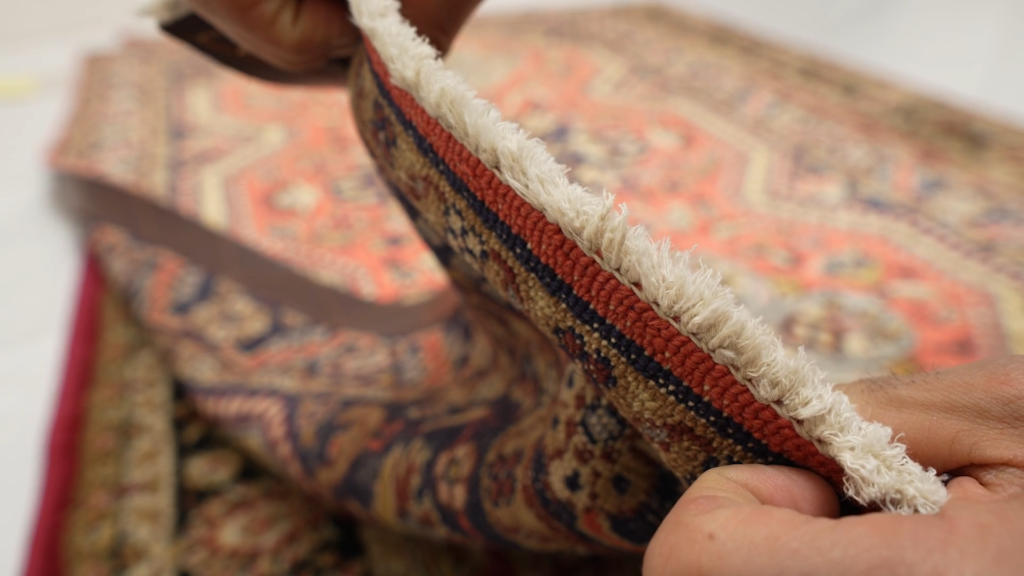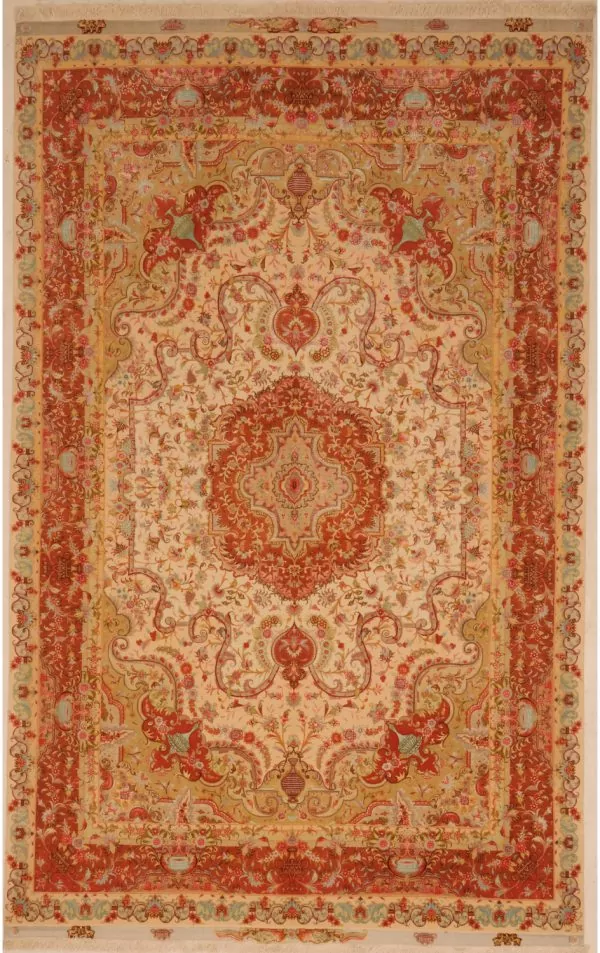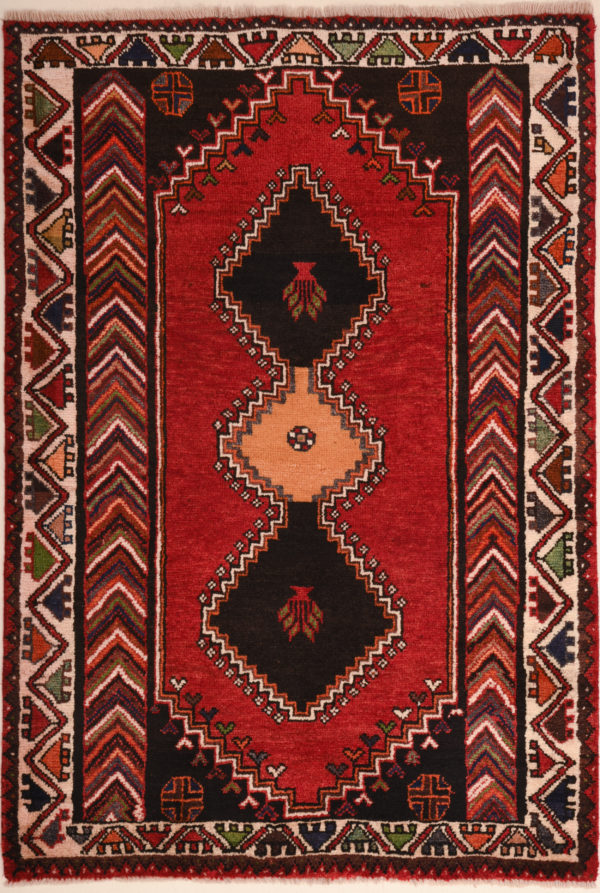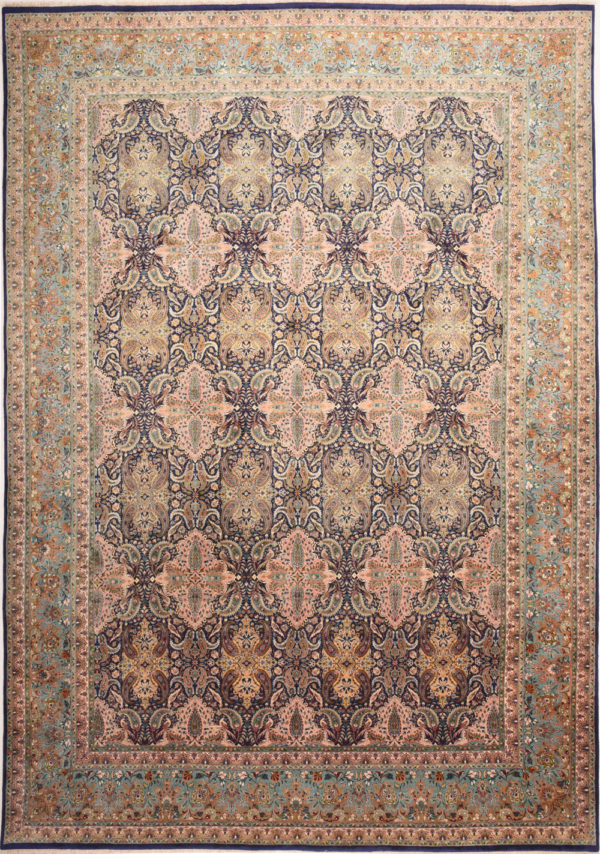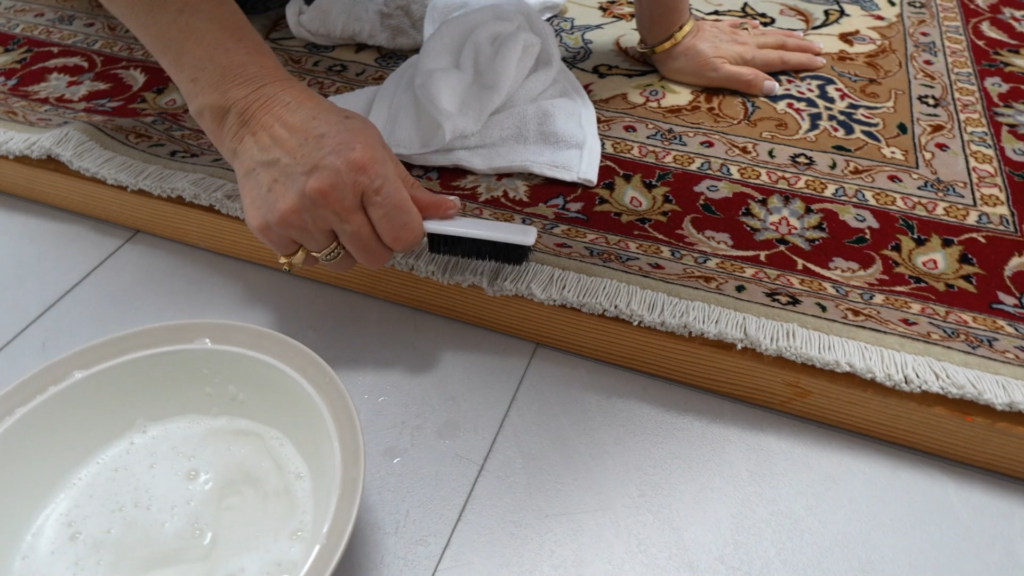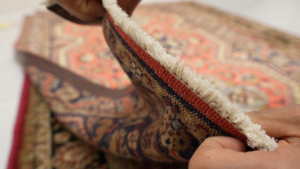Persian rugs represent a pinnacle of artistic craftsmanship, with a history that dates back centuries. These rugs, known for their intricate patterns and vibrant colors, are not just decorative items but cultural artifacts.
A key element of their design is the fringes, which are often overlooked despite their significance in the rug’s overall aesthetic and functionality. This article delves into the world of Persian rug fringes, exploring their history, importance, and the artistry involved in their creation.
What are Persian Rug Fringes?
Persian rug fringes, or the tassels at the rug’s edges, are more than decorative features. They are the warp threads of the rug, extending beyond its end. These threads are foundational to the rug’s structure, as the weft threads are woven through them to create the rug’s pattern. The history of Persian rug fringes is intertwined with the evolution of weaving techniques across different dynasties and regions.
Originally, fringes were functional, intended to secure the weave. Over time, their aesthetic role grew, with variations in length, thickness, and style reflecting different weaving schools and eras. Some ancient rugs feature fringes that are short and tightly knotted for durability, while others have longer, looser fringes that are more decorative.
What is the Fringe on a Rug Called?
The fringe on a rug is often simply called a “fringe” or “tassel.” In the context of a hand knotted rug, these fringes are more than decorative elements; they are part of the rug’s foundational structure. Technically, these fringes are the extended warp threads of the rug. The warp refers to the set of lengthwise threads that are held in tension on a frame or loom when a rug is being woven. After the weaving process is complete, these threads are left intact at either end of the rug, forming what we see as the fringe.
In different cultures and contexts, these fringes might have specific names or terms associated with them, often reflecting the weaving traditions and techniques of the region. For instance, in Persian rug-making, specific knotting techniques used in fringes might have particular names indicative of their regional or tribal origins.
Materials Used in Persian Rug Fringes
While the base of a Persian rug can be made from various materials like cotton, wool, or silk, the fringes, which are extensions of the rug’s warp threads, typically mirror these materials.
Cotton: Cotton is commonly used for its strength and durability. It provides a sturdy foundation, especially for rugs with heavier weaves.
Wool: Wool fringes are popular for their softness and resilience. They add a luxurious texture and are often found in rugs that prioritize comfort and warmth.
Silk: For the most exquisite and expensive rugs, silk fringes are a hallmark. They offer a lustrous sheen and an incredibly fine texture, contributing to the rug’s overall elegance.
Each material brings its unique characteristics to the fringe, influencing not only the quality of the rug’s appearance but also its durability and maintenance needs.
Do All Persian Rugs Have Fringes?
When it comes to Persian rugs, one of the most commonly asked questions is whether all of these rugs come with fringes. The answer is nuanced. Traditionally, Persian rugs do have fringes, as these are the natural byproduct of the rug weaving process.
Fringes are the warp threads that extend from the ends of the rug, integral to its structure. However, not all rugs marketed as “Persian-style” will have authentic fringes. In some modern adaptations or machine-made versions, fringes might be either absent or added as a decorative afterthought rather than being a continuation of the rug’s warp threads.
In authentic, handwoven Persian rugs, the presence of fringes is almost universal. Yet, their style, length, and thickness can vary greatly depending on the rug’s origin, the materials used, and the weaver’s technique. These variations in fringes add to the uniqueness and authenticity of each rug.
Varieties and Styles of Persian Rug Fringes
The variety in Persian rug fringes is a reflection of the diverse weaving traditions across Iran. For example, fringes from the city of Qom, known for their silk rugs, are often delicate and intricately knotted, while those from tribal areas like Baluchistan are thicker and more rugged.
The style of fringes can indicate a rug’s origin, with certain knotting patterns or lengths being characteristic of specific regions. This diversity not only adds to the aesthetic appeal of each rug but also tells a story of its heritage and the weaver’s background.
The Art and Craftsmanship of Fringes
The creation of fringes in Persian rugs is a meticulous process that showcases the weaver’s skill and artistic vision. It begins with choosing the right material, which must complement the rug’s texture and design.
The techniques used in fringe-making include knotting, which is common in tribal rugs for its strength; twisting, often seen in city-made rugs for a finer finish; and braiding, a less common but visually appealing style. The method of attaching the fringes is crucial, as it affects the rug’s longevity. This process often involves securing each fringe thread by hand, ensuring that the rug’s end is tightly bound and less prone to unraveling.
The Role of Fringes in Rug Durability and Aesthetics
The practical role of fringes in Persian rugs is twofold: they contribute to the rug’s durability and enhance its aesthetic appeal. Structurally, fringes help secure the ends of the rug, preventing the weave from unraveling. A well-made fringe can significantly extend the life of a rug.
Aesthetically, fringes complete the rug’s appearance, adding a dimension of elegance and fluidity. They frame the rug, creating a visual transition from the rug to the floor.
Cultural and Symbolic Significance
In Persian culture, fringes can carry deep symbolic meanings. They are often seen as the extension of the rug’s soul, representing continuity and eternity.
In some tribal rugs, the way fringes are knotted or twisted can carry specific tribal connotations or familial symbols. They can also be indicative of the weaver’s status, with more intricate fringes often found in rugs made by master weavers. In some regions, the length and style of the fringe can even have spiritual or protective significance.
The Impact of Fringes on Interior Design
In interior design, the right Persian rug with harmonious fringes can be a focal point in a room. The style and length of the fringes should complement the room’s décor.
For a traditional setting, longer, more ornate fringes can add a sense of luxury. In a contemporary space, shorter, neater fringes might better suit the sleek lines and minimalist aesthetic. The color and texture of the fringes can also be a key element in tying together the room’s color scheme.
Contemporary Trends and Fringes
Contemporary interior design trends have led to innovative uses of fringes in Persian rugs. Designers are blending traditional fringe styles with modern rug patterns, creating unique pieces that bridge the gap between the old and the new. This fusion results in rugs that respect traditional craftsmanship while fitting seamlessly into modern homes. These trends are expanding the appeal of Persian rugs to a wider audience, introducing the timeless beauty of these traditional pieces to contemporary interiors.
Should I remove the fringe from an Oriental rug?
Deciding whether to remove the fringe from an Oriental rug is a matter of both aesthetic preference and preservation of the rug’s integrity. Here are some points to consider:
Structural Role: In handwoven Oriental rugs, the fringes are typically the continuation of the warp threads and play a structural role. Removing them can sometimes lead to unraveling or weakening of the rug’s edges.
Aesthetic Value: Fringes contribute to the traditional appearance of Oriental rugs. Removing them can alter the rug’s original look and feel, potentially affecting its aesthetic and cultural value.
Restoration vs. Removal: If the fringes are damaged, consider professional restoration rather than removal. Restoration can preserve both the rug’s aesthetics and its structural integrity.
Resale Value: Removing the fringes can impact the rug’s resale value, as it alters its original state. Collectors and enthusiasts often seek rugs in their traditional form.
Personal Preference: Ultimately, the choice may come down to personal preference and the decor of the space where the rug is used. If fringes do not fit with your interior design or are a practical nuisance, removal might be considered.
Consult Professionals: It’s advisable to consult with a rug expert or a professional restorer before making any alterations. They can provide guidance on the best course of action for your specific rug.
In summary, removing the fringe from an Oriental rug is a decision that should be made carefully, considering both the rug’s structural and aesthetic aspects, as well as personal preferences and practical considerations.
Maintenance and Care of Persian Rug Fringes
Maintaining Persian rug fringes is crucial for preserving the overall integrity of the rug. Each material requires specific care:
Cotton fringes benefit from regular dusting and gentle washing.
Wool fringes require occasional combing to prevent tangling
Silk fringes need delicate handling to prevent breakage.
Avoiding harsh chemicals and direct sunlight is essential to prevent fading and weakening of the fibers. Regular inspection and gentle cleaning can prevent common issues like matting or fraying.
